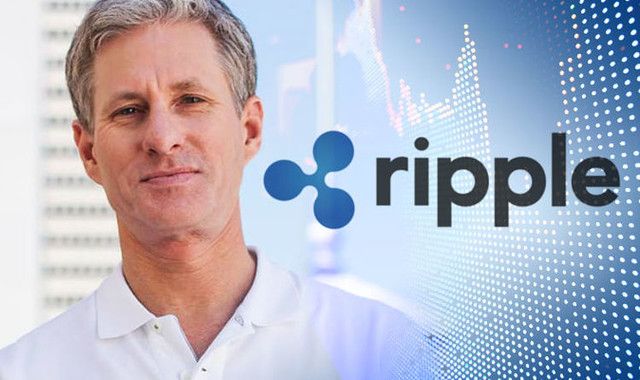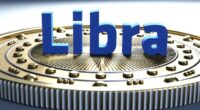Ripple Vs Bitcoin: Theres is still a lot of confusion with the key differences between Bitcoin and XRP. How does Ripple work in comparison to Bitcoin infrastructure? Why do many state that Bitcoin is decentralized and XRP is centralized?
Ripple offers a stack of enterprise solutions that are used by financial institutions and payment providers across the globe. It’s an open platform designed to facilitate international transactions. Ripple has the ultimate goal of dominating international fiat transactions. A portion of Ripples solutions are powered by the native XRP coin and some of the Ripple enterprise solutions do not use the digital asset XRP.
The XRP Coin
The XRP is the native token on the platform. It represents the transfer of value inside the network. Its purpose is to act as a mediator for both crypto and fiat exchanges. In essence, you can transfer your Ripple as a representative of value across international borders without the restrictions. The cost of transactions is just $0.00001. Once a transaction goes through, the $0.00001 permanently disappears from the platform.
History of Ripple XRP
While the work on the coin began in 2013, the idea was first proposed in 2004. In 2013, a group of investors invested in Ripple Labs, which came up with Ripple XRP.
It Utilizes Unique Blockchain Tech to verify transactions, Ripple uses a patented technology known as the Ripple Protocol Consensus Algorithm.
How Ripple is Used
One of the uses of Ripple is for low-commission currency exchanges. Many currencies are hard to convert directly. As a result, banks will first convert them into USD before transforming them into the final currency. This usually comes with double costs, which Ripple can help to eliminate. Entities simply buy XRP to initiate the transaction in their denominated currency. Once the other entity ( client ) receives the XRP, they sell the XRP for their native currency. What this does is eliminate the need for financial institutions to “pre-fund” nostro accounts in a countries native currency. Right now institutions have to do this around the globe to allow for smooth cross-border payments. During FiNext 2019, Ripple director of payments ( Ryan Gaylor ) mentioned that $5 trillion dollars is locked up in dormant accounts globally to insure institutions are prepared for when they have to encounter cross-border payments. This comes with high costs and inefficiencies for the global payments system.
According to Ripple “Digital assets can be used to lower the cost and improve the speed of liquidity for these cross-border transactions. This is especially true in emerging markets where the cost of currency exchange is high and the trading volume is low.”
Another benefit of Ripple is that transactions are quite fast. International transactions usually take place in days. However, Ripple can make transactions possible in just 4 seconds. Besides that, Ripple can be used for payments. Users can buy products and services online using the currency to lower the transaction fees.
How Ripple Differs from BTC
One main difference is that you cannot mine Ripple. As a result, there are no mining rewards. All the XRP coins are pre-mined. However, out of 100 billion coins, only 38 billion coins are available. Ripple Labs will release the rest of the coins with time. BTC is not pre-mined and there are just 21 million coins.
Ripple controls 60 percent of the coins while BTC is not controlled by any central entity. Another key difference between Ripple and BTC is transaction speed. On BTC, transactions can take at long at 30 minutes. On Ripple, the transactions take just 5 seconds to confirm.
Another main difference between BTC and Ripple is usage. Ripple was intended to help transactions in currencies or commodities such as gold. BTC, on the other hand, was created to mimic and even someday, replace fiat money. In general, Ripple is a decentralized currency exchange. To exchange your EUR for USD, you can do it inside Ripple without using an intermediary.
Bitcoin Store of Value
Many have argued that Bitcoin will create “gold 2.0” in the form of digital value. Bitcoin only has 21 million coins that will ever be mined. Bitcoin has mined almost 18 million of those 21 million so far. Once Bitcoin mines all 21 million, it will serve as a deflationary asset, something the financial markets have never seen before. Nothing the world invests in today has a deflationary model. Starting off with fiat its-self, the monetary system continues to print more supply to meet their debt obligations. Traditional stocks for example can alter their supply in the form of forward/reverse splits to fit upper management agendas. Traditional investors today have to continuously invests in the markets to attempt to keep up with inflation levels. Nobody controls Bitcoin and nobody can alter it’s supply. Bitcoin has been the best performing asset class to date and is showing everybody the true power in supply vs demand. The infrastructure is throwing wall street a curve ball and it hasn’t even hit main street adoption yet. Bitcoin is the king on the block being around for 10+ years now. With Bitcoin scalability issues, many see it serving as a store of value compared to altering the payments market. Other cryptocurrencies such as XRP can process much higher TPS ( transactions per second ) and make a better argument for solving payment issues globally.
Summary
In general, BTC is fully decentralized with the ultimate goal of eliminating the “middle-man” ( banks / governments ) to create a “peer to peer” monetary system. Ripple on the other hand has stated numerous times that they believe banks and governments are here to stay. With this being said, they strive to work directly with these entities to introduce the power of Blockchain and digital asset technologies. The ultimate goal of Ripple is to make the current financial infrastructure more efficient across the globe.
Image Source: Pavlos Giorkas Via Flickr
Notice: Information contained herein is not and should not be construed as an offer, solicitation, or recommendation to buy or sell securities. The information has been obtained from sources we believe to be reliable; however no guarantee is made or implied with respect to its accuracy, timeliness, or completeness. Authors may own the crypto currency they discuss. The information and content are subject to change without notice. Visionary Financial and its affiliates do not provide investment, tax, legal or accounting advice. This material has been prepared for informational purposes only and is the opinion of the author, and is not intended to provide, and should not be relied on for, investment, tax, legal, accounting advice. You should consult your own investment, tax, legal and accounting advisors before engaging in any transaction. All content published by Visionary Financial is not an endorsement whatsoever. Visionary Financial was not compensated to submit this article Please also visit our Privacy policy; disclaimer; and terms and conditions page for further information.

